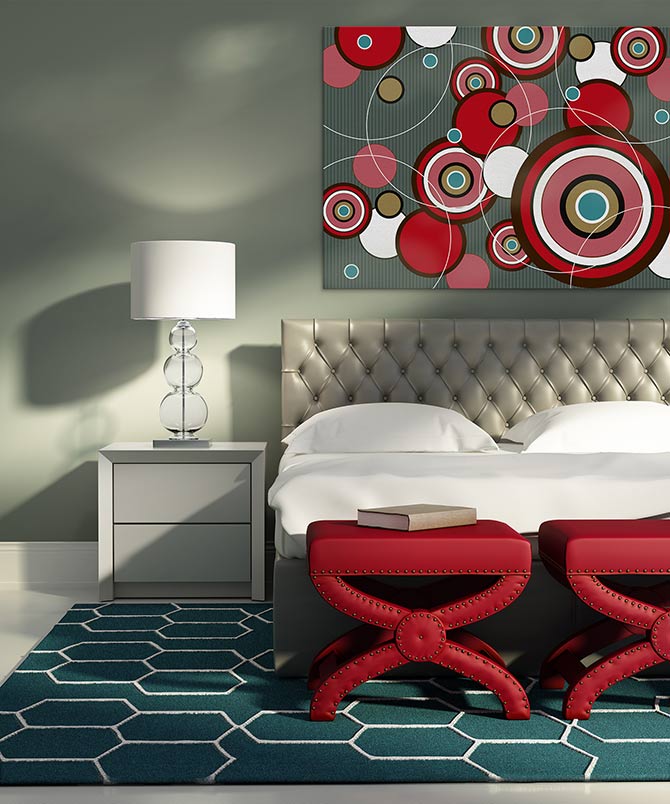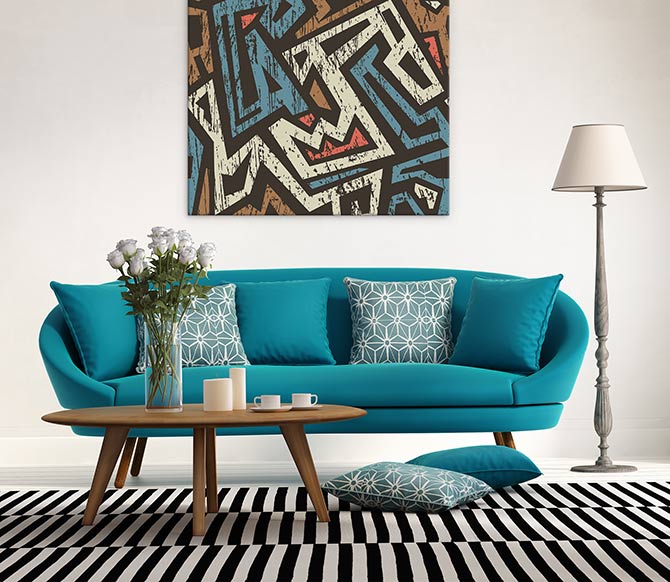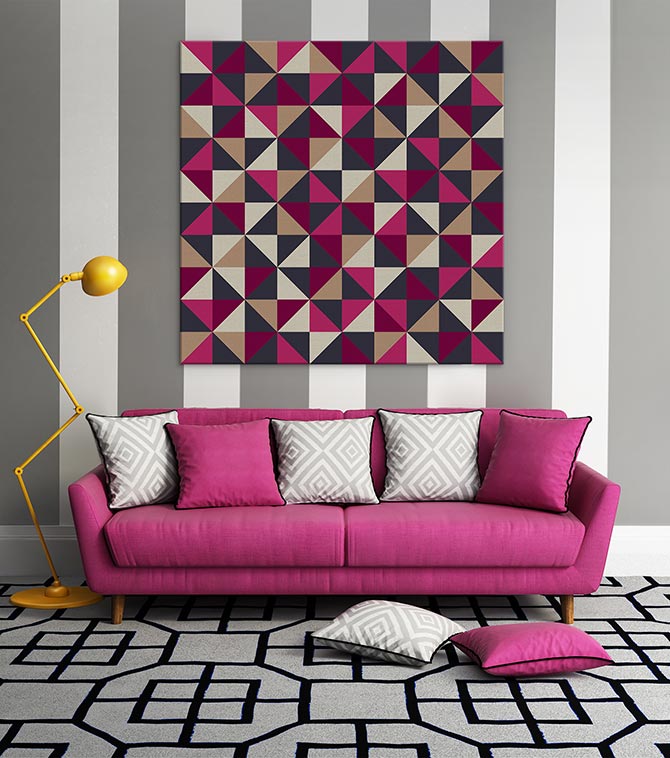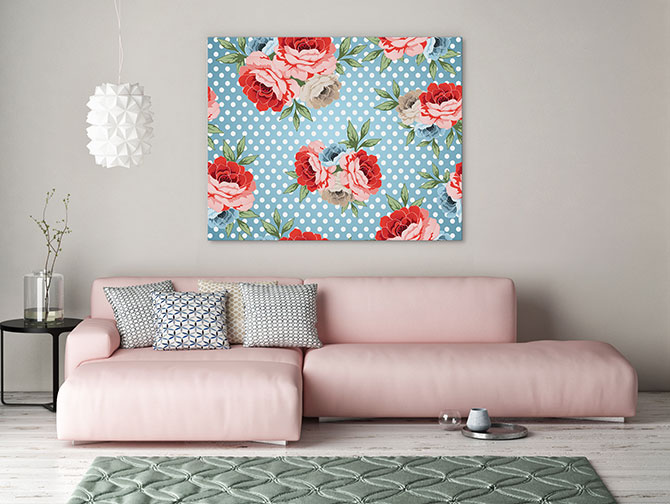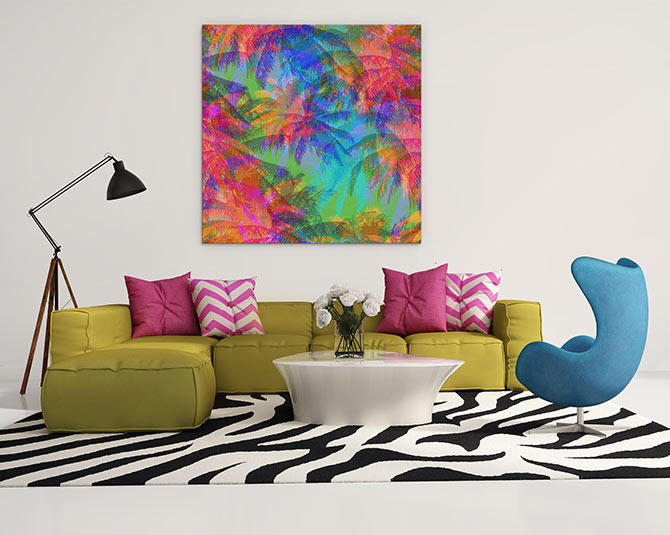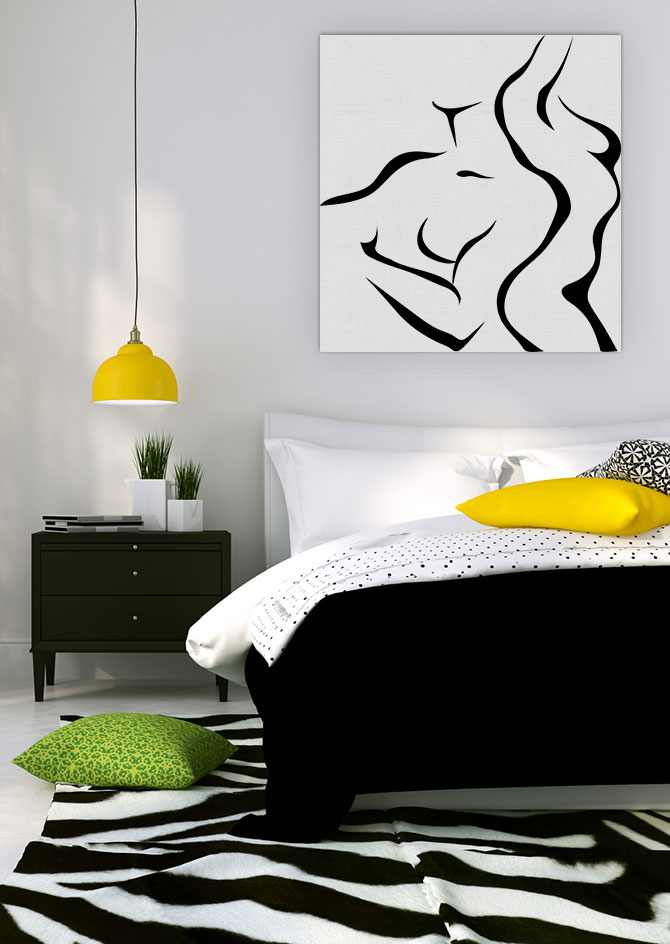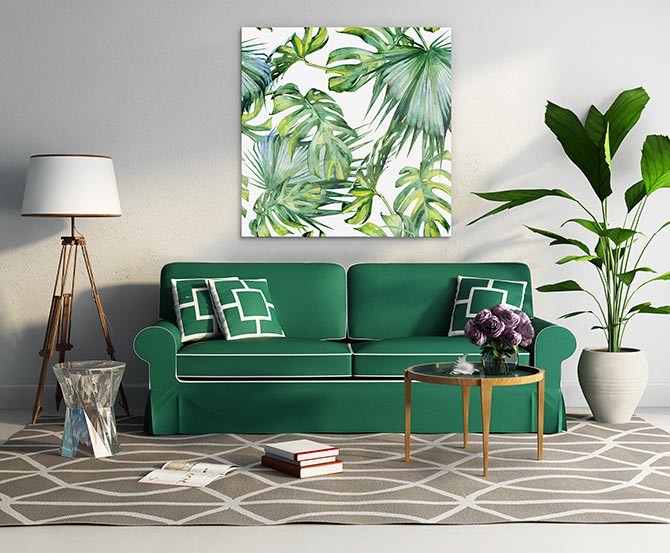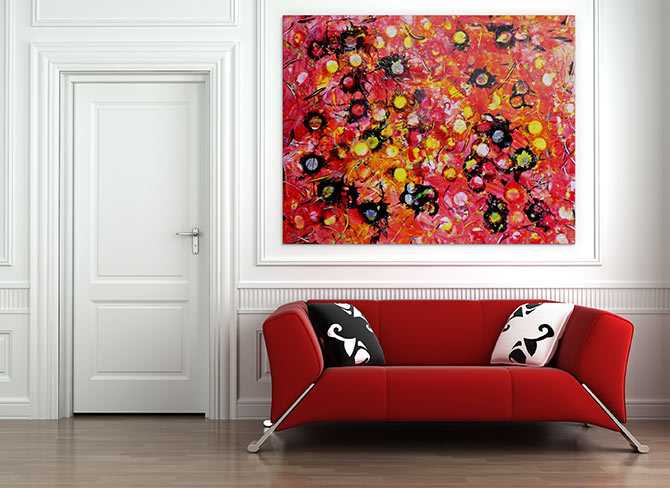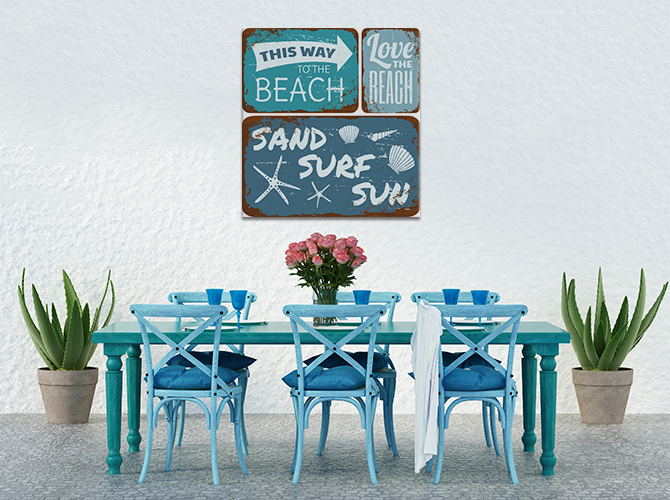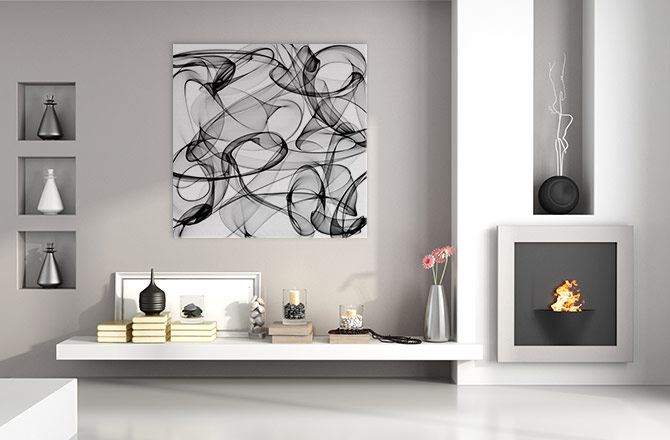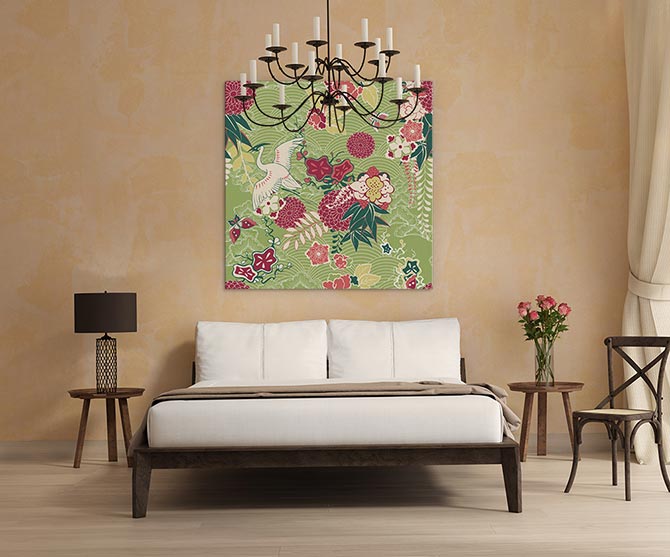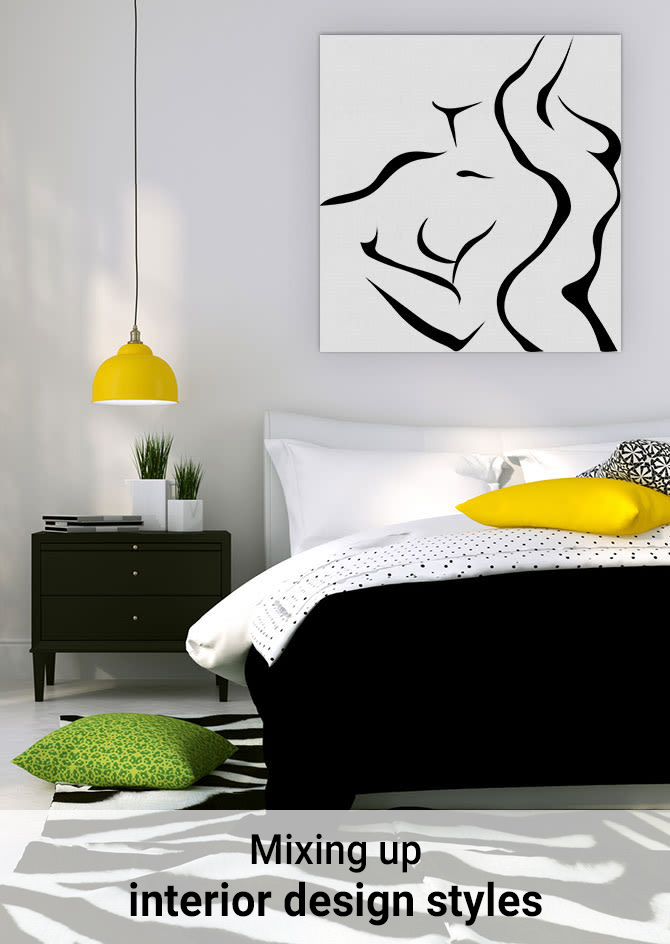
Combining different or matching colours in one room is old news! Leading designers are encouraging homeowners to mix and match interior design styles. Not only does this new trend look amazing but it provides visual diversity. Best of all, including a variety of patterns and styles allows you to feature an entire spectrum of colourful statements.
Odd combinations often work better than you think, despite being told for decades that we should never clash when it comes to interior design. Understandably, many people are afraid of this bold move and let their fear prevent them from creating a gorgeous interior. Such audacious interior design combinations may seem daunting at first, but with a proper set of instructions you can have a trendy and welcoming home.
Odd numbers work well
There’s something mystical about the number three. In many ancient cultures and religions, three is a revered number and said to possess magic. Even in modern day culture, the number three heralds a power that we are captivated by.
When it comes to the number of patterns used in one room, three makes things work visually. This is also the perfect amount of different hues to make an area unique without overcomplicating or crowding the space.
Many designers agree that you should start with three different interior design styles that comprise of distinctive elements including size, shapes, look and texture.
If you’re new to pattern clashing, be sure to start with decor colours that are almost similar or complementary. Find the perfect balance between being bold and making a smart decision when it comes to a flawless colour combination. After you master the colour spectrum, you’ll be able to use more versatile colours in the future and widen your choice of shades.
Remember: this is something you’ll have to live with so it has to be carefully picked out and implemented.
Types of patterns
Different types of patterns, such as a bold stripe mixed with a strong chevron pattern, give you the freedom to incorporate them without getting sick of seeing the same style over and over again.
You’ll soon discover that there is a shape and colour combination for every type of room and design of house. However to get to that point, you’ll need to undertake some serious experimentation.
Stripes are always a popular choice to create your very own Helmholtz Illusion as a design feature. With an array of stripes available— super skinny to thick, horizontal or vertical—they are enigmatic and versatile. They are also easy to incorporate as a starting point in wallpaper or paintwork. Create additional interest by adding a bright pattern art print on top.
With a nod to the 1950s and the comeback in the 1980s, polka dots have once again become a very popular interior design style and used everywhere: from wallpapers to soft furnishings to furniture. You can use this pattern to accentuate a certain part of the room and give it a dose of vintage style. For those who like to be in control of everything, geometrical patterns made of repeating simple and basic forms like triangles and squares will do just fine as a substitute.
The perfect implementation
Patterns are mostly used to accentuate walls. You can bring them to a whole new level by painting on stripes, playing with marble and other techniques. In the more private areas of your home, don’t be afraid to go bold with a stylish nude or statement Bedroom Art print.
The key to successfully creating beautifully patterned walls is to vary the scale of your choices, which means a mixture of big, medium and small shapes. If you decide to go really big on the walls, you can add an opposing pattern to your furniture. Additionally, try adding different types of round rugs in various shades that will round off the design perfectly. This is also the best way to tone down the number of colours used in one place and make your design more harmonious.
Layering interior design styles
The first pattern you should start with should be the largest one. You need to apply it carefully because you’re going to build the entire interior design style around it. Depending on your home’s style, you can choose one colour that will be the primary in your pattern. As a base for the next layer, plan ahead and carefully consider all future design elements that you will incorporate in and around this foundation.
Select the space that you want to cover (the floor, one wall, matching key furniture etc) and consider how big you want to go – be careful not to overdo it!
Next, the second layer you should focus on should be approximately half the scale of your first layer. We recommend picking just two colours. This is a great way to ensure you don’t have too many tones in one place, which might appear eclectic and busy. Consider choosing a new type of pattern to break the cycle and to make things more interesting.
For the third layer, opt for a more delicate and intricate detail and cover it with a colour scheme that’s not overly complicated.
Mixing interior design styles
You don’t need to be an interior designer to give your house the “wow” factor. Just follow these simple steps when opting for a plethora of patterns. A solid mix in complementary tones will create a design that is timeless and give your interior a real style boost. Plus, it’s kind of fun!
This was a guest post by Emma B. Joyce. Emma is blogger based in Australia. She is a true home decor and DIY fanatic. Emma is also a mum who likes to spend her free time with her daughter. Finding new designs and patterns is her daily task. She is an editor-in-chief at Smooth Decorator.

